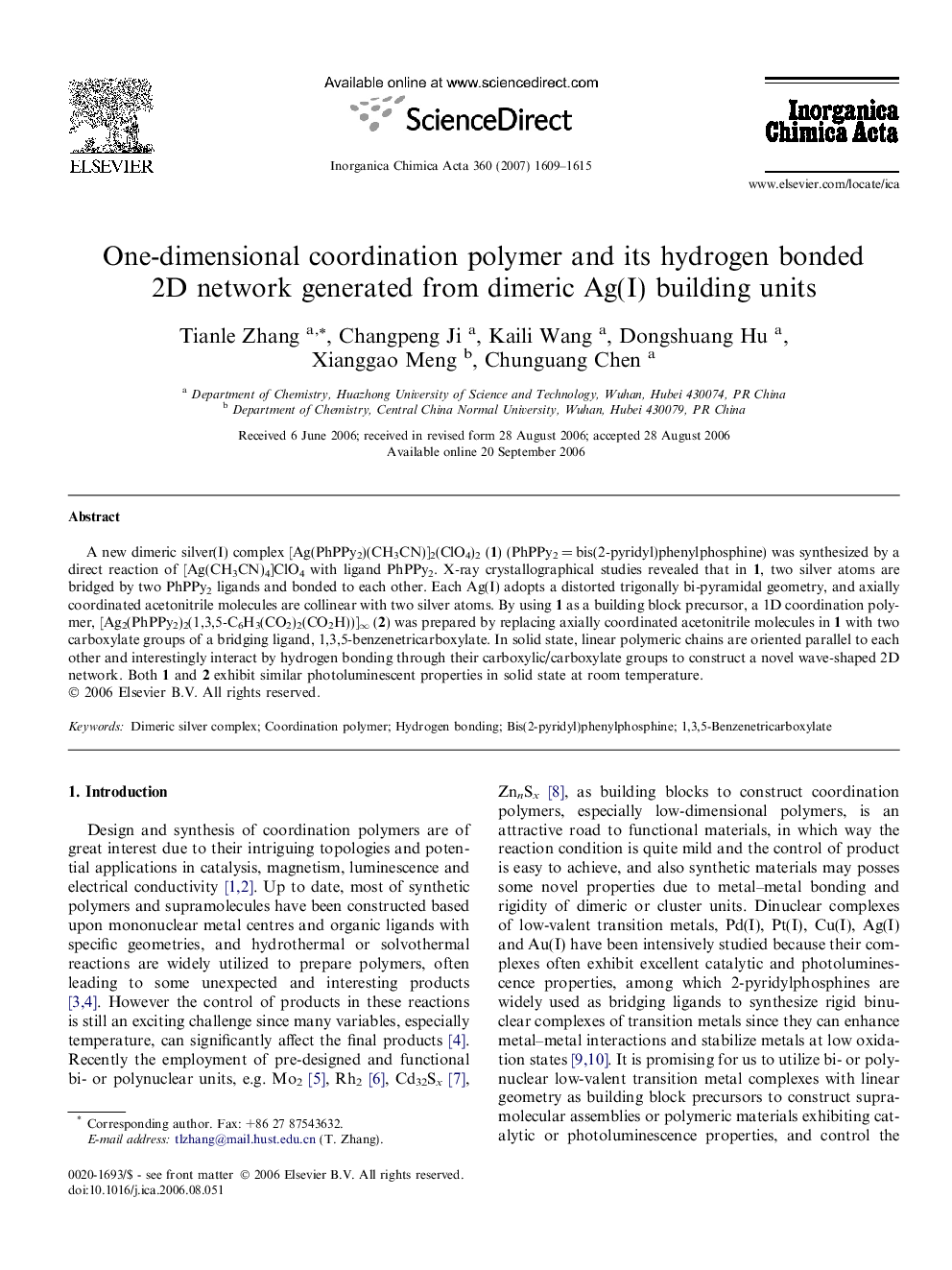| Article ID | Journal | Published Year | Pages | File Type |
|---|---|---|---|---|
| 1311682 | Inorganica Chimica Acta | 2007 | 7 Pages |
A new dimeric silver(I) complex [Ag(PhPPy2)(CH3CN)]2(ClO4)2 (1) (PhPPy2 = bis(2-pyridyl)phenylphosphine) was synthesized by a direct reaction of [Ag(CH3CN)4]ClO4 with ligand PhPPy2. X-ray crystallographical studies revealed that in 1, two silver atoms are bridged by two PhPPy2 ligands and bonded to each other. Each Ag(I) adopts a distorted trigonally bi-pyramidal geometry, and axially coordinated acetonitrile molecules are collinear with two silver atoms. By using 1 as a building block precursor, a 1D coordination polymer, [Ag2(PhPPy2)2(1,3,5-C6H3(CO2)2(CO2H))]∞ (2) was prepared by replacing axially coordinated acetonitrile molecules in 1 with two carboxylate groups of a bridging ligand, 1,3,5-benzenetricarboxylate. In solid state, linear polymeric chains are oriented parallel to each other and interestingly interact by hydrogen bonding through their carboxylic/carboxylate groups to construct a novel wave-shaped 2D network. Both 1 and 2 exhibit similar photoluminescent properties in solid state at room temperature.
Graphical abstractOne-dimensional coordination polymer, [Ag2(PhPPy2)2(1,3,5-C6H3(CO2)2(CO2H))]∞ (2) was constructed by a substitution of axially coordinated acetonitrile molecules in a dimeric compound [Ag(PhPPy2)(CH3CN)]2(ClO4)2 (1). In solid state, 1D polymeric chains interact through strong hydrogen bonding to form a novel 2D wave-shaped network.Figure optionsDownload full-size imageDownload as PowerPoint slide
